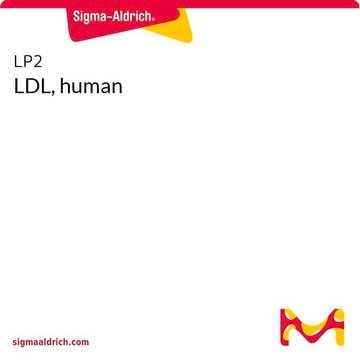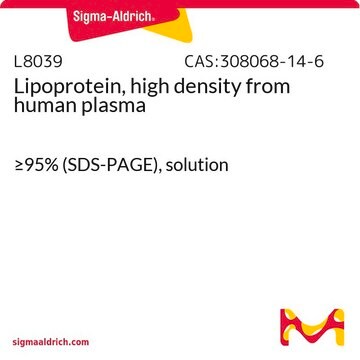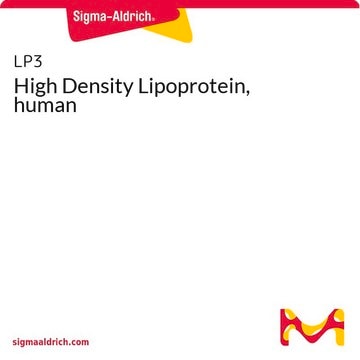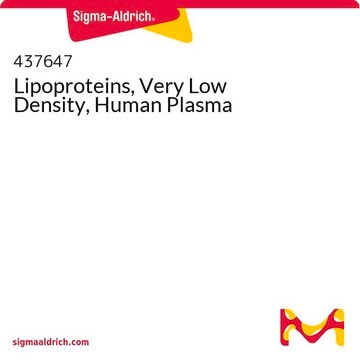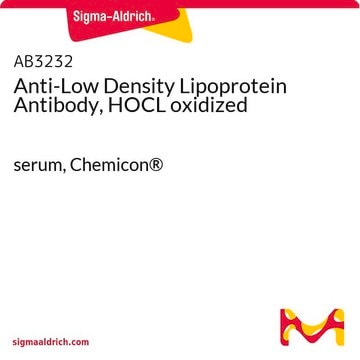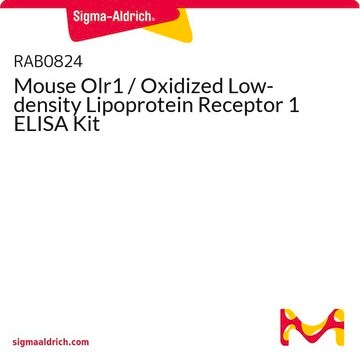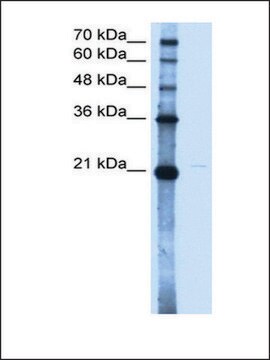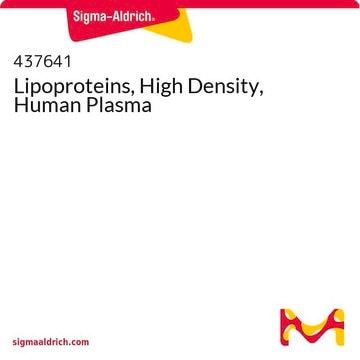L7914
Lipoprotein, low density from human plasma
≥95% (SDS-PAGE), solution
Sinónimos:
β-Lipoprotein, LDL, Low density lipoprotein
About This Item
Productos recomendados
biological source
human plasma
Quality Level
assay
≥95% (SDS-PAGE)
form
solution
functional group
ester
phospholipid
shipped in
wet ice
storage temp.
2-8°C
Gene Information
human ... APOB(338) , APOC2(344) , APOE(348)
¿Está buscando productos similares? Visita Guía de comparación de productos
Application
- as an additive in cholesterol-free RPMI media
- as a component in buffer to perform an assay for measuring lipid peroxidation
- to stimulate hepatic macrophages
- as a plasma protein to determine pazopanib unbound fraction (fu%) by equilibrium dialysis
Biochem/physiol Actions
Caution
Physical properties
Physical form
Other Notes
Disclaimer
Storage Class
10 - Combustible liquids
wgk_germany
WGK 3
flash_point_f
Not applicable
flash_point_c
Not applicable
Certificados de análisis (COA)
Busque Certificados de análisis (COA) introduciendo el número de lote del producto. Los números de lote se encuentran en la etiqueta del producto después de las palabras «Lot» o «Batch»
¿Ya tiene este producto?
Encuentre la documentación para los productos que ha comprado recientemente en la Biblioteca de documentos.
Los clientes también vieron
Artículos
Lipoproteins package cholesterol for transport in plasma, essential for lipid transport and cellular function in the body.
Lipoproteins package cholesterol for transport in plasma, essential for lipid transport and cellular function in the body.
Lipoproteins package cholesterol for transport in plasma, essential for lipid transport and cellular function in the body.
Lipoproteins package cholesterol for transport in plasma, essential for lipid transport and cellular function in the body.
Nuestro equipo de científicos tiene experiencia en todas las áreas de investigación: Ciencias de la vida, Ciencia de los materiales, Síntesis química, Cromatografía, Analítica y muchas otras.
Póngase en contacto con el Servicio técnico

